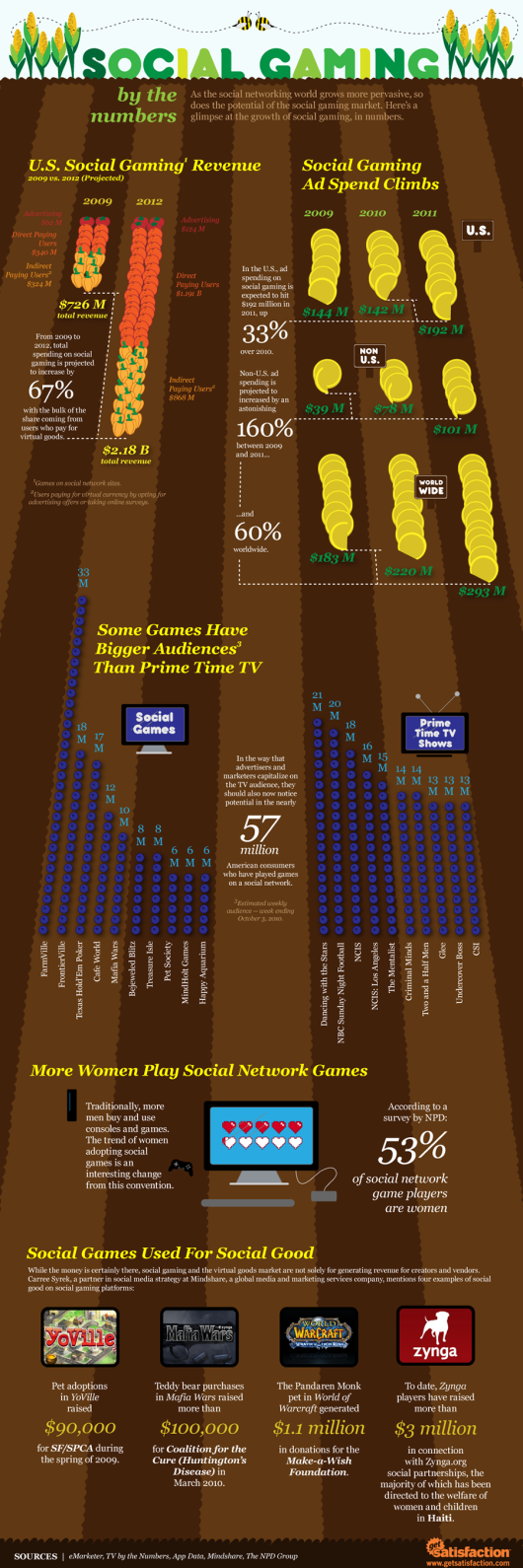We all have spotted an iPhone or Pepsi can in a movie scene.It’s a well known concept of “Product placement”, a form of advertisement, where branded goods or services are placed in a context usually devoid of ads, such as movies, music videos, the story line of television shows, or news programs. The product placement is often not disclosed at the time that the good or service is featured.
Games such as Mafia Wars and FarmVille, attract millions of active players. Mafia Wars, for example, is played by more than 25 million Facebook users each month.This huge audience, which includes a wide range of demographics, particularly women, is highly engaged and motivated to interact with brands, particularly those that reward them with virtual currency or progress their social game status.By using the same techniques as product placement marketing in movies, brands can be seamlessly woven into the fabric of a social gaming environment.
Genre of the game and player demographics are the deciding factors in matching a game’s story and/or player’s connection with a specific brand.FarmVille, for example, is the perfect place for food-related brands to get in front of a social gaming audience that stands in the tens of millions. Israeli chocolate brand, Elite Taami Nutz, did just that.
Saatchi & Saatchi BBR Tel Aviv and its digital subsidiary, Saatchi Interactive, developed a campaign in which FarmVille players were able to buy and grow Nutz branded peanuts.Non-profit brands are also finding success with in-game product placement. Water.org raised $13,000 in under a week through FishVille players purchasing a specially designed fish. Not only that, traffic to their website increased ten-fold during the campaign.
Movie promoters are also jumping on the social gaming bandwagon. A week-long, pre-launch campaign was run on Mafia Wars for gangster movie “Public Enemies” whereby players could undertake Public Enemies-themed “jobs” and unlock additional virtual items associated with the movie along with loot, clips and facts.Here Mafia Wars theme of gang violence was the driving factor to match the movie ( a product ) of similar theme.
In a game such as Seduction, genre is closer to humor and sex with flirtatious story lines.Our experiences suggest that this genre is enjoyed equally by both genders.Products where sexuality is used in advertising, certain values and attitudes towards sex are necessarily ‘sold’ along with a product. In advertising terms, this is called “the concept”.
The message may be that “innocence is sexy” (as used by Calvin Klein when it uses young people in provocative poses), or that link pain and violence with sexiness and glamour (as used by Versace), or that women enjoy being dominated, or that women come with a product (e.g. in the advertisement for Budweiser Beer), or that the use of a certain product is naughty but legal, or that use of a certain product will make the user more attractive to the opposite sex, and many other messages.
These messages are weaved into the story narratives through scenarios .Gaming experience is aided by the scenario graphics and seamlessly links player’s in-game activity with actual online purchase of a product.

